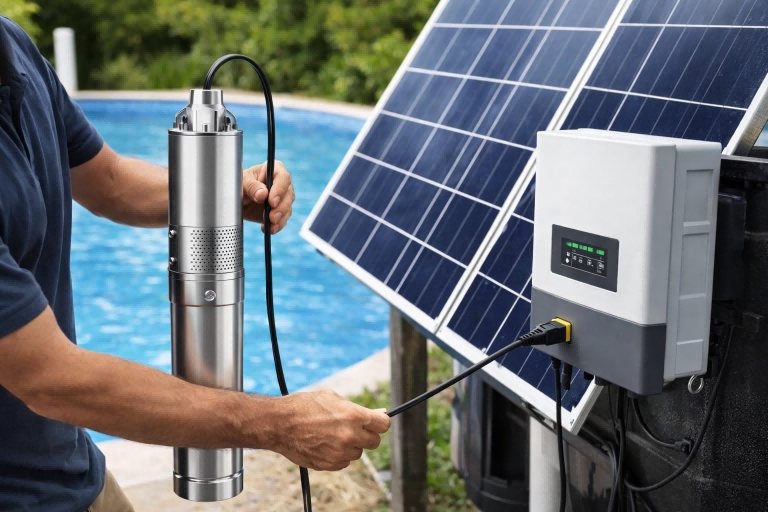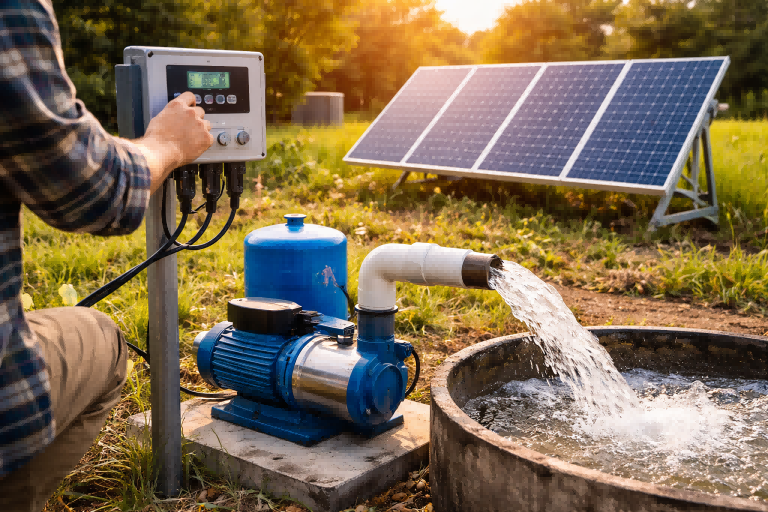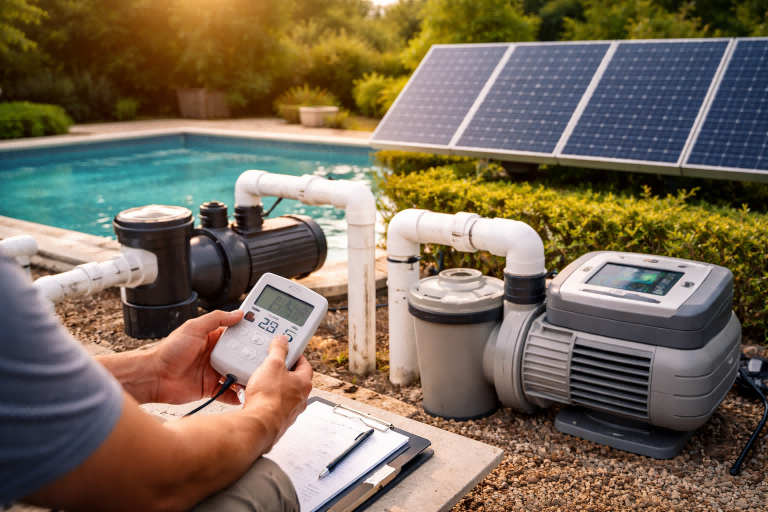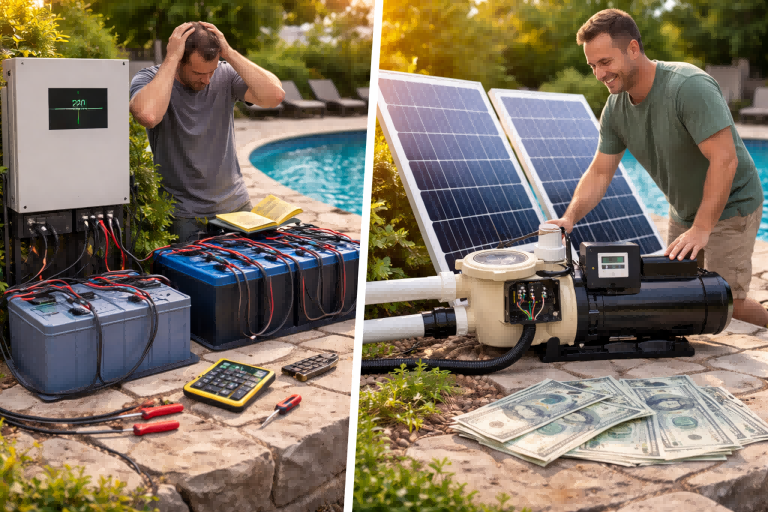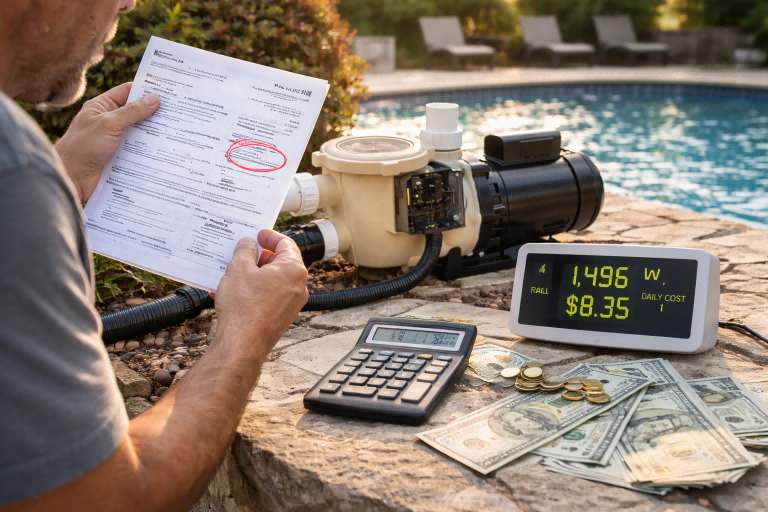Low water pressure makes daily tasks frustrating.
It turns showers into trickles and simple chores into slow ordeals.
A booster pump is the engineered solution, restoring powerful, consistent flow.
Yes, a booster pump is an appliance specifically designed to increase water pressure.
It works by taking the existing low-pressure water supply from your municipal line or a storage tank and mechanically adding pressure to it.
This ensures a strong, reliable flow to all outlets in a residential or commercial building.
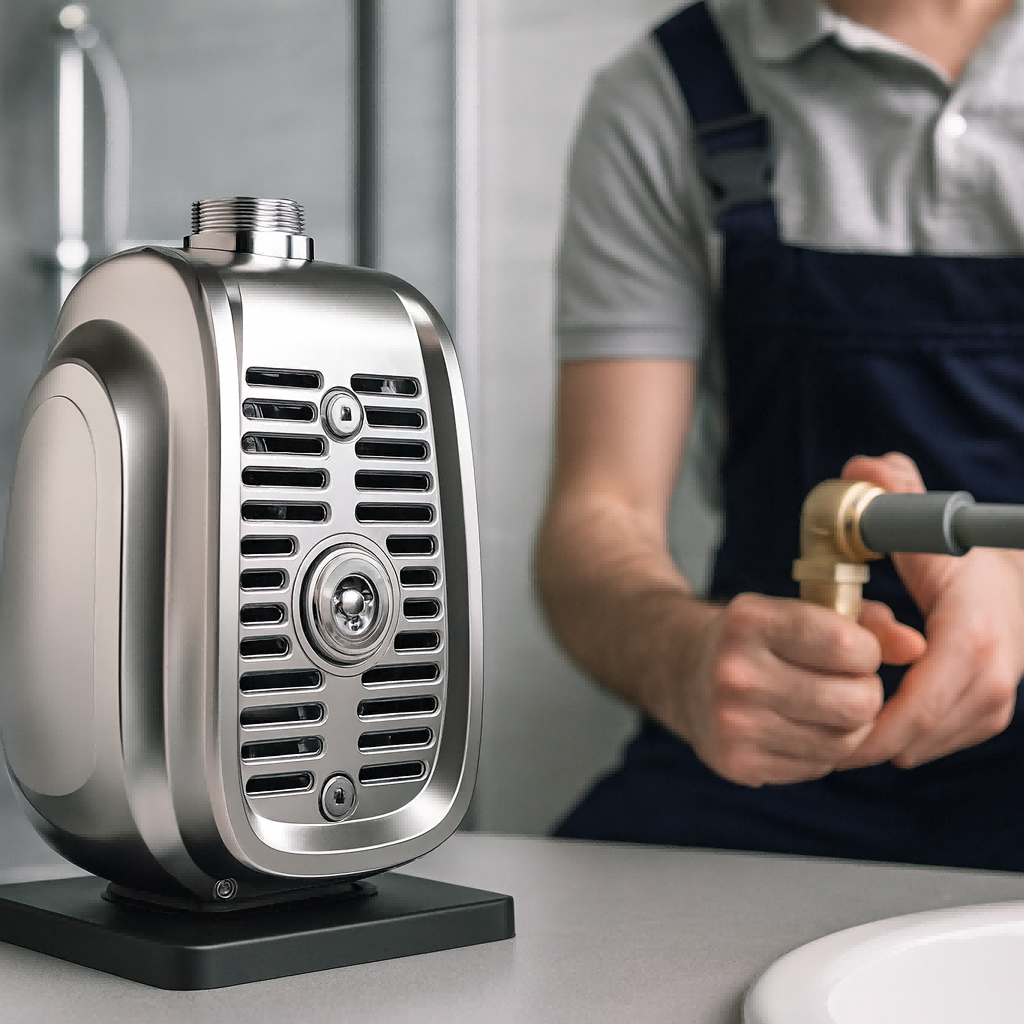
A booster pump seems simple.
Water goes in, gets pressurized, and comes out stronger.
But the technology inside the best modern pumps is far more sophisticated than that.
It's a complex system designed for efficiency, reliability, and intelligence.
Understanding these internal workings is key to choosing a pump that not only solves your pressure problem but does so quietly, efficiently, and for many years to come.
Let's explore the advanced engineering that separates a basic pump from a high-performance water pressure solution.
Core Drive Technology and Performance
Older pump systems are often noisy and deliver fluctuating pressure.
This leads to inconsistent flow and wasted energy as the pump runs at full speed.
Modern drive technology solves this with intelligent, quiet, and stable performance.
The core of a high-performance booster pump is its drive system, typically a Permanent Magnet Synchronous Motor (PMSM) paired with a Variable Frequency Drive (VFD).
This combination allows the pump to precisely adjust its speed to meet water demand, ensuring constant pressure, quiet operation, and major energy savings.
The performance of a booster pump is directly tied to the sophistication of its motor and control system.
Outdated, single-speed pumps operate on a simple on/off principle.
They either run at 100% capacity or they are off.
This creates abrupt pressure spikes and drops, mechanical stress, and wasted electricity.
Modern pumps use a completely different approach, centered around intelligent control and advanced motor design.
This is where the real innovation lies.
How VFD and PMSM Create Superior Performance
The combination of a Variable Frequency Drive (VFD) and a Permanent Magnet Synchronous Motor (PMSM) is the key.
The VFD acts as the brain, while the PMSM provides the efficient muscle.
The VFD constantly monitors the water pressure in the pipes.
When you open a faucet, the pressure drops slightly.
The VFD detects this change and instantly tells the PMSM to speed up just enough to maintain the pre-set pressure.
When you close the faucet, the VFD slows the motor down or puts it to sleep.
This synergy results in several key benefits that define a premium pump experience.
- Constant, Stable Pressure: The system's primary goal is to eliminate fluctuations. Whether one shower is running or three faucets are open, the pressure at the tap remains exactly where you set it. This is a level of control older pumps cannot achieve.
- Ultra-Quiet Operation: The precise control and advanced motor design lead to whisper-quiet performance. With noise levels under 50dB, these pumps are often quieter than a library. This makes them ideal for installation within homes or noise-sensitive commercial environments.
- Soft Start & Stop: The VFD technology allows the motor to ramp up and down smoothly. This "soft start" function prevents the jarring mechanical shock and loud "clunk" common in older systems. It also prevents "water hammer," a damaging hydraulic shockwave that can stress pipes and fittings, ultimately leading to leaks.
Power, Efficiency, and Adaptability
A pump's raw power is important, but its ability to use that power efficiently is what sets it apart.
Advanced systems offer powerful performance while consuming less energy.
They are also designed to work reliably even in challenging conditions.
For example, a high-quality pump can achieve a high rotational speed, sometimes over 5,000 revolutions per minute (RPM).
This generates significant force and a strong suction lift, making it capable of drawing water from sources up to 8 meters below the pump.
This power is managed intelligently for energy savings.
By running only as fast as needed, a VFD pump can reduce electricity consumption significantly compared to a conventional pump that always runs at full speed.
The table below breaks down these performance aspects.
| Feature | Benefit | Technical Detail |
|---|---|---|
| Wide Voltage Range | Reliable operation even with unstable power grids. | Functions perfectly from 165V to 260V. |
| High Suction Lift | Can draw water from underground tanks or shallow wells. | Capable of suction lifts up to 8 meters. |
| Pressure Adjustment | Customizable pressure to suit specific needs or system limitations. | Can be adjusted from 20% to 95% of max pressure. |
| Energy Efficiency | Lower electricity bills and reduced environmental impact. | VFD control matches energy use to real-time demand. |
This combination of quiet power, intelligent control, and robust adaptability is the foundation of a modern, user-focused booster pump.
Excellence in Mechanical and Material Engineering
A pump can fail if its internal parts wear out or corrode.
Poor quality materials lead to frequent breakdowns, costly repairs, and a short service life.
Using premium, durable materials ensures long-term reliability and performance.
The mechanical integrity of a pump depends entirely on the quality of its materials.
Premium pumps use components like AISI304 stainless steel impellers, high-grade bearings from top manufacturers, and advanced motor stators to guarantee corrosion resistance, quiet operation, and an exceptionally long operational life.
The most advanced electronic brain is useless if the mechanical body of the pump fails.
Longevity and reliability are built from the inside out.
Every internal component, from the motor's core to the bearings and seals, must be engineered to withstand constant use, high pressures, and environmental challenges.
Top-tier manufacturers invest heavily in material science and mechanical design to build pumps that you can install and forget about.
This commitment to quality is evident when you examine the specific materials used in the pump's construction.
It is the difference between a product designed to last and one designed to be replaced.
The Heart of the Motor: Stator and Rotor Design
The stator and rotor are the core components of the electric motor that drives the pump.
Their quality directly impacts efficiency, heat generation, and overall lifespan.
Inferior materials will overheat, lose efficiency, and fail prematurely.
A superior motor is built with specialized components chosen for performance under stress.
- 600-Grade Silicon Steel: The stator, the stationary part of the motor, is built with high-grade silicon steel. This material reduces energy losses within the motor, meaning more electrical energy is converted into pumping power.
- Class F Insulation Wire: The copper windings in the motor are coated with Class F insulation. This provides high thermal resistance, allowing the motor to run reliably at higher temperatures without the risk of an electrical short or burnout.
- Advanced Ferrite Magnets: The rotor, the rotating part of the motor, uses permanent magnets made from high-performance ferrite. These magnets are designed to maintain their magnetic strength even at temperatures up to 150°C, ensuring the motor's power and efficiency do not degrade over time.
These features work together to keep the motor's temperature rise low—often less than 50K.
A cooler-running motor is a longer-lasting motor.
Bearings and Hydraulics: The Moving Parts
The parts that move and touch the water are critical points of potential failure.
Noise, vibration, and corrosion are common problems that premium materials solve.
The choice of bearings and impeller material is a clear indicator of a manufacturer's commitment to quality.
High-quality pumps often use bearings from globally recognized manufacturers.
These precision components offer significant advantages over generic alternatives.
They are measurably quieter, more precise in their movement, and have a demonstrably longer lifespan.
This translates to a pump that runs more smoothly and quietly for years.
For the parts that handle the water directly, the material choice is crucial for preventing corrosion and wear.
| Component | Material Advantage | Impact on Performance |
|---|---|---|
| Bearings (e.g., NSK/C&U) | Offer up to 16% higher precision and 40% quieter operation than standard bearings. | Reduces vibration, extends motor life by over 10%. |
| Impeller | AISI304 stainless steel is the gold standard for corrosion resistance, strength, and hygiene. | Prevents rust, ensures clean water, and maintains pump efficiency. |
| Housing | UV-resistant ABS plastic casing is used to protect the pump from sun damage and physical impacts. | Prevents the exterior from becoming brittle and cracking. |
Together, these carefully selected materials create a robust mechanical system that can withstand the rigors of continuous operation, ensuring the pump delivers reliable performance day after day.
Total Electronic Reliability and Protection
Water and electronics are a recipe for disaster.
A single drop of moisture or condensation on a circuit board can cause a catastrophic failure.
An intelligent pump needs its electronic brain to be completely protected from the environment.
To achieve maximum reliability, the pump's main control board (PCB) must be fully protected.
Advanced pumps use a technique called "potting," where the PCB is completely sealed in a waterproof resin. This creates an IP67-rated barrier against moisture, dust, and vibration, preventing electronic failure.
A pump's "intelligence" lives on its printed circuit board (PCB).
This board houses the processor, sensors, and controllers that manage everything from pressure to motor speed.
It is the most advanced and also the most vulnerable part of the system.
In a typical pump environment, condensation, humidity, and dust are constant threats.
A standard, unprotected circuit board is highly susceptible to short circuits and corrosion caused by moisture.
This is one of the most common reasons for pump failure.
Recognizing this critical weakness, leading engineers have adopted a solution from the aerospace and marine industries: PCB potting.
Understanding PCB Potting
Potting is a process where the entire electronic controller board is encapsulated in a solid block of epoxy or resin.
This compound starts as a liquid, flowing around every component on the board.
It then hardens into a solid, impermeable barrier.
This creates a completely sealed electronic core that is impervious to environmental threats.
This single design choice dramatically enhances the pump's long-term durability.
It is a feature you cannot see from the outside, but it is one of the most important for ensuring a long service life.
It is estimated that this protection method prevents over 95% of failures related to moisture and can extend the life of the electronic controller by 3 to 5 years.
The "14-Shield" Comprehensive Protection System
Beyond physical protection from moisture, a smart pump needs to protect itself from operational and electrical problems.
A comprehensive suite of built-in software and hardware protections acts as a vigilant guardian for the system.
This "14-Shield" system continuously monitors the pump's status and can intervene to prevent damage.
This intelligent protection can be grouped into two main categories: electrical safety and system safety.
Electrical & Thermal Protections:
These functions safeguard the motor and electronics from dangerous electrical conditions.
- Voltage Protection: Shuts down if input voltage is too high or too low.
- Overcurrent Protection: Prevents damage from excessive electrical current draw.
- Stall Protection: Stops the motor if the rotor is jammed and cannot turn.
- Overheating Protection: Monitors the temperature of both the driver board and the motor, shutting down to cool off if necessary.
System & Sensor Protections:
These functions protect the pump from mechanical issues and environmental conditions.
| Protection Feature | Function and Benefit |
|---|---|
| Dry Run Protection | Detects a lack of water and initiates a smart recovery sequence. It tries to self-prime, then sleeps for increasing intervals to check for water return without wasting energy. |
| Antifreeze Protection | Prevents ice from forming and cracking the pump body in cold climates by briefly running the motor to generate a small amount of heat. |
| Pipeline Leak Warning | Monitors for small, persistent pressure drops that indicate a leak in the plumbing, then alerts the user to the potential problem. |
| Sensor Failure Warning | The system self-diagnoses its own sensors. If a pressure or temperature sensor fails, it provides a specific error code, making troubleshooting faster and easier. |
This multi-layered protection strategy, combining a physically sealed PCB with intelligent software monitoring, creates a system that is exceptionally robust and resilient.
It is designed not just to perform, but to survive.
Intuitive Control and Smart Features
A complex system can be useless if it's too difficult to operate.
Users need a simple way to control the pump and understand what it's doing.
Advanced features like remote control and dual-pump linking further enhance usability.
A well-designed user interface with clear LED indicators and simple button controls makes operating the pump effortless.
Advanced features like optional Wi-Fi for remote monitoring, intelligent twin-pump linking for high-demand or backup scenarios, and high-temperature water handling add significant value and versatility.
All the advanced technology inside a booster pump must be accessible and controllable for the end-user.
Complexity should be internal, while the external experience should be one of simplicity and clarity.
A well-designed interface allows users to easily set their desired pressure and understand the pump's status at a glance.
Furthermore, a modern pump is no longer just a standalone device; it's part of a larger, smarter water management system.
Features that allow for remote control, networking, and handling of specialized applications are becoming increasingly important.
Simple Interface, Deep Insights
Despite its internal complexity, operating a modern pump is straightforward.
A typical user interface consists of a few buttons and a set of clear LED indicators.
- Simple Controls: Basic operations are intuitive. A short press of a power button turns the pump on or off. "Up" and "Down" buttons allow for easy adjustment of the target water pressure.
- Factory Reset: A simple long-press of the power button can restore the pump to its original factory settings, making it easy to start over if needed.
While the basic controls are simple, the system also provides deep insights for those who want them.
A long press of a mode button often cycles the display to show critical real-time operating data.
This allows a technician or an advanced user to see exactly what the pump is doing.
| Data Display Code | Meaning |
|---|---|
A.xx |
Real-time water temperature. |
P.xxx |
Real-time power consumption in watts. |
xxxx |
Real-time motor speed in RPM. |
U.xxx |
Real-time input voltage. |
t.xx |
Real-time temperature of the PCB. |
At-a-glance LED indicators provide immediate visual feedback on the pump's status, confirming constant pressure mode or alerting the user to issues like a leak, voltage fault, or water shortage.
Advanced Features for Modern Applications
Beyond the core function of boosting pressure, high-end pumps offer smart features that expand their utility.
- Remote Wi-Fi Control: An optional Wi-Fi module allows the pump to connect to the internet. Using a smartphone app, users can monitor the pump's status, adjust pressure settings, and receive fault alerts from anywhere in the world.
- Twin Pump Link Mode: For large residential properties or commercial buildings with high or variable water demand, two pumps can be linked together. The system intelligently runs one or both pumps based on real-time demand. This mode also provides automatic backup; if one pump fails, the other takes over seamlessly.
- High-Temperature Capability: Standard pumps are designed for cold water only. But many systems, such as those with solar water heaters or hot water circulation loops, require a pump that can handle high temperatures. Premium pumps are often built to manage water up to 75°C, making them suitable for these demanding applications.
- Pressure Tank Integration: These systems use a small pressure tank (1.5L - 5L). This tank absorbs small pressure fluctuations and allows the pump to stay off during very minor water usage, like a dripping tap. This simple addition can reduce the number of times the pump starts and stops by up to 70%, significantly reducing wear and tear on the motor and electrical components.
These smart features transform the booster pump from a simple utility device into a versatile and intelligent component of a modern building's water management system.
Conclusion
A modern booster pump is a sophisticated solution that reliably increases water pressure.
It uses advanced technology to deliver quiet, efficient, and long-lasting performance for any building.
FAQs
How much pressure can a booster pump add?
This varies by model, but residential booster pumps typically add between 20 to 60 PSI (pounds per square inch) to your existing water pressure.
Are booster pumps noisy?
Older models can be, but modern VFD booster pumps are designed for ultra-quiet operation, often running at noise levels below 50 decibels, which is quieter than a conversation.
Does a booster pump use a lot of electricity?
A modern Variable Frequency Drive (VFD) pump is very energy-efficient. It adjusts its motor speed to match demand, using significantly less electricity than a traditional single-speed pump.
Can I install a booster pump myself?
While possible for those with advanced plumbing and electrical skills, professional installation is highly recommended to ensure safety, proper setup, and compliance with local codes.
Do you need a pressure tank with a booster pump?
VFD booster pumps do not strictly need a large pressure tank. However, using a small one (1-5 liters) is recommended to reduce pump cycling and extend its lifespan.
How do I choose the right size booster pump?
Pump sizing depends on your home's flow rate requirements and desired pressure. It is best to consult with a professional who can calculate your specific needs.
Where is the best place to install a booster pump?
The pump should be installed on the main water line just after the water meter and main shutoff valve, but before the line splits to feed different areas.
What is the lifespan of a booster pump?
A high-quality, well-maintained booster pump can last for 8 to 15 years. The lifespan depends heavily on material quality, usage, and the presence of protective features.


